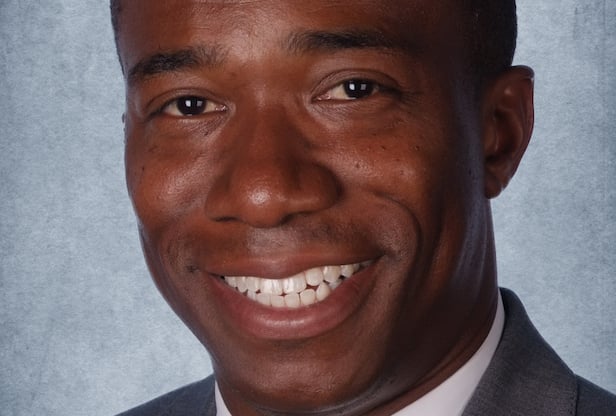 “If you look at where the supply has gone, it has followed the equity,” says Daniels.
“If you look at where the supply has gone, it has followed the equity,” says Daniels.
CALABASAS, CA—Formerly a client of Marcus & Millichap’s Institutional Property Advisors as head of AIG Global Real Estate’s multifamily investments team, Jeff Daniels now is a key member of the IPA team as SVP and national director of its multifamily platform. Some five months into his new role, Daniels clearly has put his stamp on the platform while also waxing enthusiastically about the level of support he’s getting from the broader Marcus & Millichap organization. GlobeSt.com caught up with Daniels last week for an update.
GlobeSt.com: Tell us about the initiatives you’re implementing within IPA’s multifamily division.
Jeff Daniels: There’s a nice swath of the country where we currently don’t have IPA coverage, so a big piece of what I’m working on externally is on the recruiting side and building out teams. Concurrently, we’re securing the infrastructure within IPA so that we can deliver more services to our clients. We’re doing that primarily by leveraging off of the expertise we have on the West Coast as well as our research services in Phoenix, and delivering to our clients—and also to our advisors, to enhance the capabilities they can bring to our client base.
GlobeSt.com: What’s your vision for IPA multifamily over the next few years?
Daniels: I’d like to be at triple our current level in terms of revenue, primarily through servicing our clients, increasing our capabilities, expanding the IPA brand into markets where we’re not represented and being able to compete in the market itself. As we have these large aggregators in the market, we need be able to compete and actually bring that business in-house. If you take one of the larger aggregators, be it a Blackstone or a Starwood, they’ve been buying national portfolios, which in many instances are broken up and sold with the brokerage firm that originally sold it to that aggregator. If we’re unable to cover the entire market, that’s a whole swath of assets we’ll be unable to reach. So we want to be able to service that larger client base.
GlobeSt.com: You had mentioned recruiting. What kinds of people are you looking for, and where?
Daniels: If you go market by market, what I’m trying to do is leverage off of our established areas. So if the transcontinental railroad went from East to West, here I’m going to build out more West to East. Given where we have very competent brokerage capabilities now, such as Northern California, a logical next step would be the Mountain States. We have a group down in Tampa, so we need to be in Atlanta, we need to have a very strong presence in the Mid-Atlantic. We have a very strong presence in Phoenix, so given our strength in Phoenix and in Southern California, the next logical move is to attack the Las Vegas market, where we’re seeing a lot more activity as investors are seeking yield.
GlobeSt.com: Las Vegas and similar markets represent a big opportunity for investors. Where do you see some of the challenges facing the sector?
Daniels: One of the biggest challenges has to do with the sale of class A properties. We’re seeing a very shallow buyer pool for class A, so it creates an opportunity for somebody to come in with class A money—not necessarily core, depending on your definition of core—and scoop up those assets at cap rates that are probably 30 basis points higher than what they were over the past 24 months.
Industry-wide, I think it’s a very interesting time, given what we’ve seen coming out of the Great Recession. With a large swath of investors, the lesson learned was on liquidity. For the first time, we’ve seen construction starts at a healthy pace. Most of those starts are only in a handful of markets, as opposed to being spread out across the entire country. That’s why we’re seeing a glut in units and perhaps even a slowdown in rent in certain markets. As those units are absorbed—and they will be absorbed, because the demand is still there—we’ll be seeing pricing power return to the landlords. That’s also the reason for some of the slowdown and softness in that class A core space, as investors are concerned about future rent growth as it stares in the face of supply, or maybe even oversupply, in some of those markets.
GlobeSt.com: How has the multifamily market evolved over the past few years?
Daniels: If you look at where the supply has gone, it has followed the equity. With developers, the saying is, “If someone will finance it, they’ll build it.” The developers have been chasing the equity, and the equity has been in the so-called smile cities, so we’re seeing the development actually follow the jobs.
But as an industry, we have to attack head-on the affordability/workforce housing crisis that we have as a country. As an industry, if we don’t embrace the concept of affordability, and figure a way out to dynamically be inclusive with that housing, then we’re going to leave it in the hands of government entities, which could damage us from a valuation standpoint. Also on the affordability issue, there is so much connectivity with what’s happening in Washington as it relates to tax reform. I know that the National Multifamily Housing Council is all over that, but the impact is going to be dramatic. Especially if the tax rate goes down, for Low Income Housing Tax Credits it could be very impactful.
GlobeSt.com: What are some of the benefits of working with the leadership team at Marcus & Millichap?
Daniels: Number one, the senior management at Marcus & Millichap has been extremely supportive of my initiatives. I’m constantly amazed at just how dynamic the senior management is, and how under-appreciative the market, particularly the institutional space, is of what George Marcus and Bill Millichap have created. If you look back over 40 years, the way they trained brokers and attacked the marketplace was unheard of in the past. They’ve basically cornered that market in that space.
Most of the IPA advisors come out of the Marcus & Millichap system, and we have advisors who have been with the company for over 30 years. Very rarely do you find that level of loyalty in today’s world.

















 Copyright © 2024 ALM Global, LLC. All Rights Reserved.
Copyright © 2024 ALM Global, LLC. All Rights Reserved.